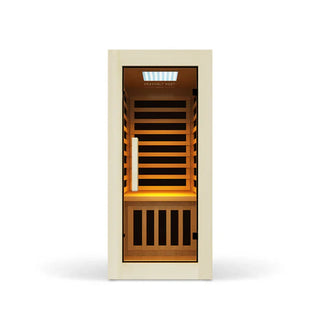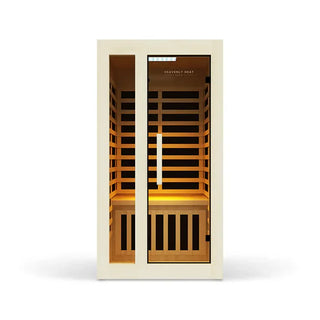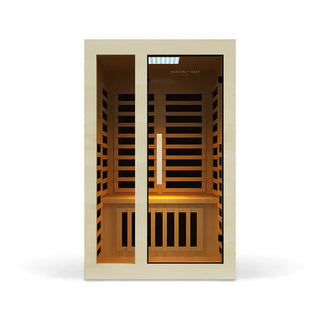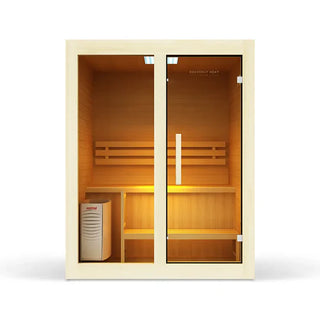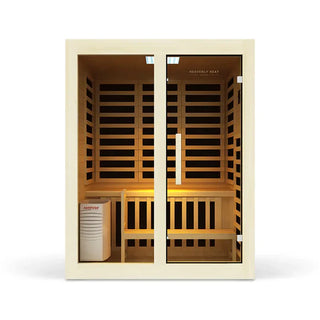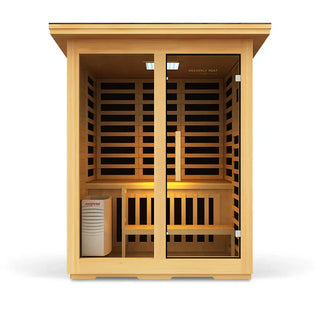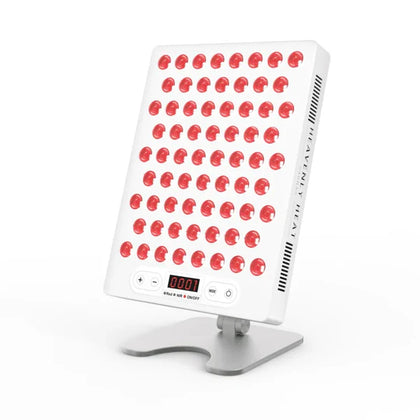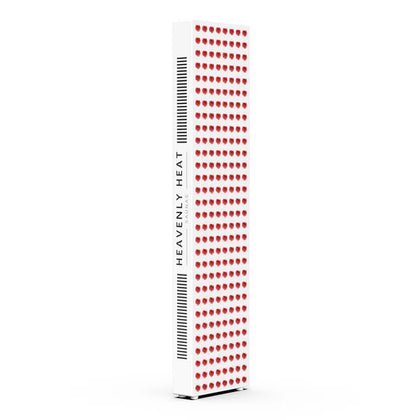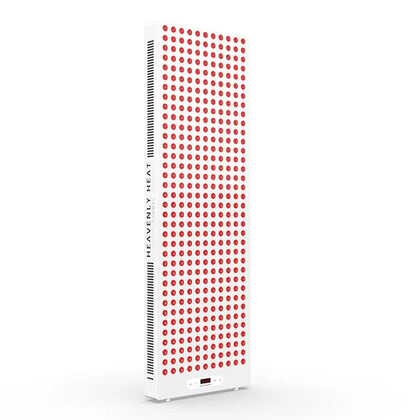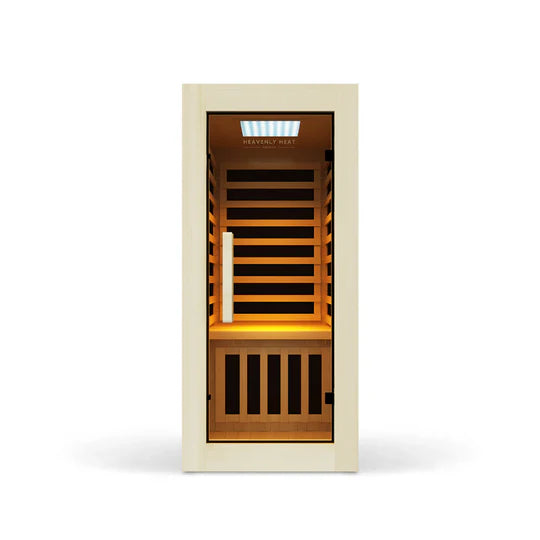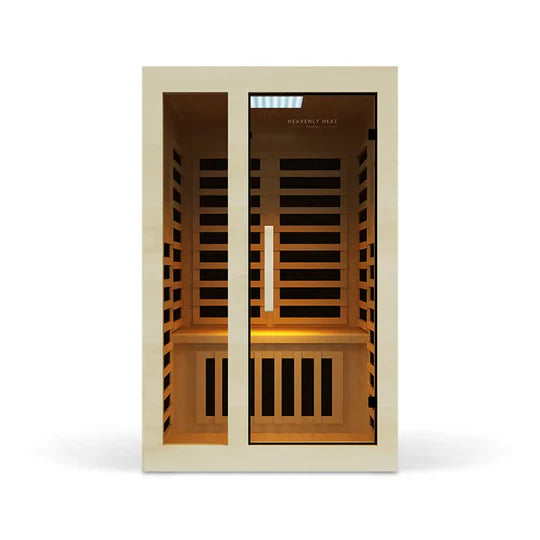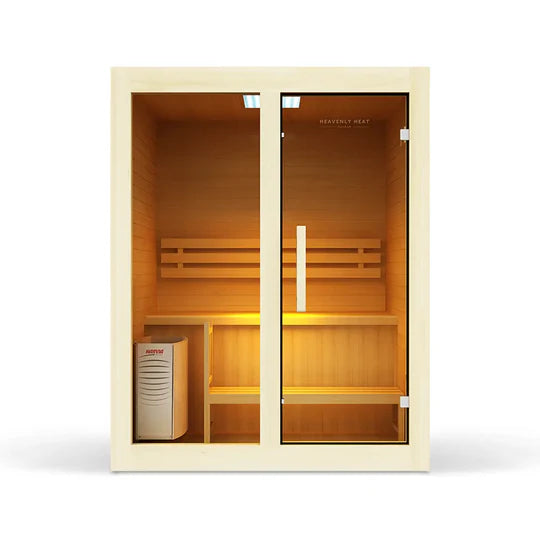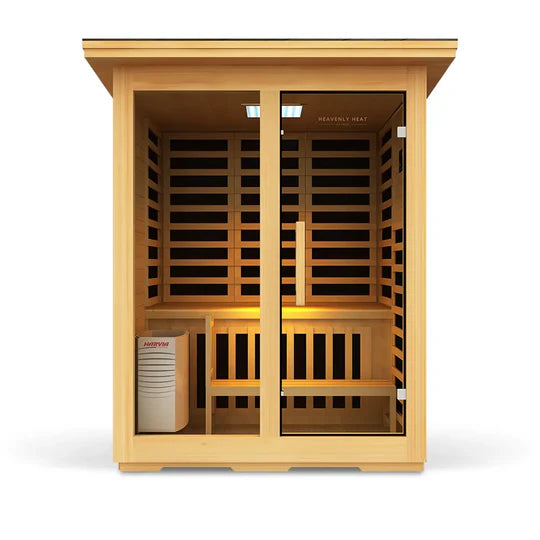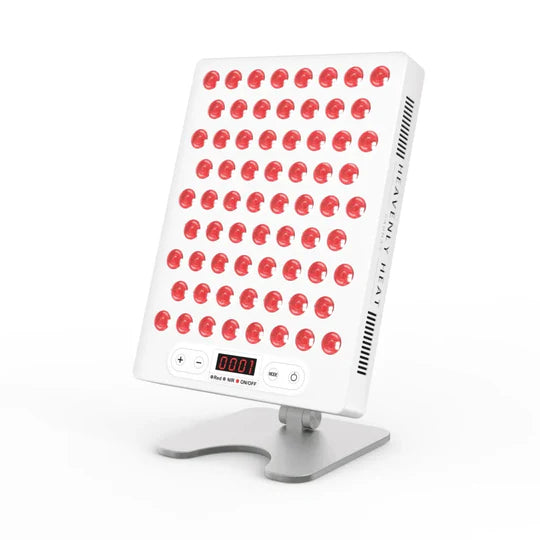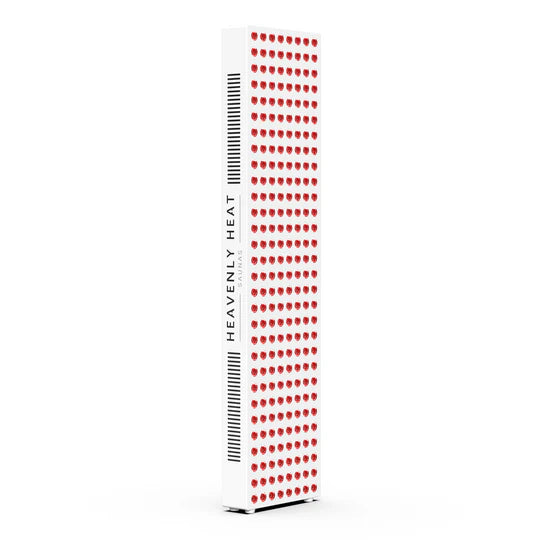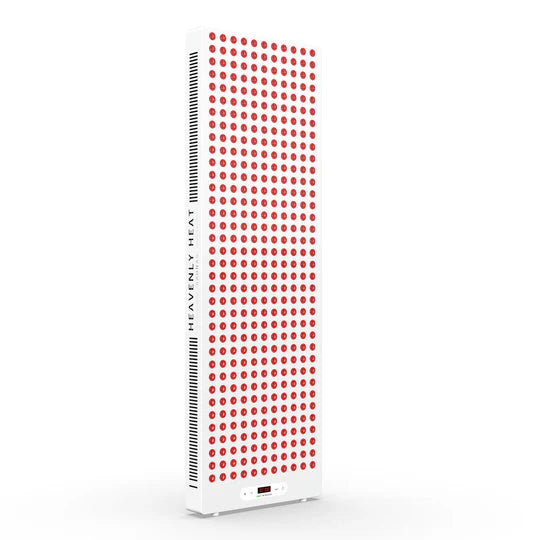Does Red Light Therapy Work For Sleep?

- Red light helps your body relax so you can fall asleep more easily: Red light therapy supports the body’s natural recovery process by improving cell function and reducing inflammation. These calming effects can help your body wind down in the evening, making it easier to fall asleep.
- Poor sleep is a daily struggle for many people: Many adults find it hard to get enough sleep or stay asleep through the night. This lack of rest often leads to feeling tired during the day, mood swings, and even long-term health problems.
- Not getting enough sleep increases your health risks: Over one-third of Americans don’t get the recommended seven hours of sleep. This ongoing lack of sleep can raise the risk of serious issues like heart disease, diabetes, and memory loss.
- Red light may be a simple, natural fix for better sleep: Because red light therapy can support your body’s sleep cycle in a natural way, it may offer a gentle, drug-free solution for people who want to sleep better and wake up feeling more refreshed.
Table of contents
The Importance of good Sleep
- Many people are not sleeping well, and it’s a growing problem: Millions of people are struggling to sleep, and the numbers are concerning. A 2020 report by the National Health Interview Survey shows that 14.5% of adults have trouble falling asleep most days. This issue is worse for people with lower incomes, women, and those living in rural areas.
- Your brain, mood, and body all work better when you sleep well: Sleep isn’t just about rest, it helps your brain think clearly, keeps your mood steady, and allows your body to repair itself. When you get good sleep, you feel better and function at your best.
- Not getting enough sleep makes you tired, grumpy, and distracted: Lack of sleep doesn’t just make you yawn, it makes you feel irritated, exhausted, and unable to focus. It affects your day, your work, and even how you treat others.
- Sleeping longer doesn’t help if your sleep isn’t deep and restful: You can sleep for many hours and still feel tired if the sleep quality is poor. What matters more is how peaceful and healing your sleep is, not just the number of hours you sleep.
- Good sleep is not a luxury, it’s a daily health need: Sleep affects everything, from how you feel emotionally to how well your brain and body function. That’s why taking sleep seriously is one of the best things you can do for your health and well-being.
The Benefits of Red Light Therapy for Improving Sleep
Enhances Melatonin Production to Support Better Sleep
- Red light tells your body it’s time to sleep: Red light therapy helps your body produce more melatonin, the sleep hormone that rises at night to tell your brain it's bedtime. This gentle signal helps you relax and get ready for rest.
- More melatonin means deeper and better sleep: With higher melatonin levels, your body finds it easier to fall asleep and stay asleep through the night. That means better sleep quality without needing sleeping pills.
- Science shows red light really works: In a study from 2012, athletes who used red light therapy every night for two weeks had more melatonin and slept better. This proves red light isn’t just a trend, it actually works.

Reduces Pain and Inflammation to Improve Sleep Quality
- Red light therapy reduces pain and inflammation to improve sleep: Red light therapy helps improve sleep by easing pain and inflammation. When you're uncomfortable due to pain or swelling, it's harder to relax and get restful sleep. Red light therapy targets these issues, helping the body heal and reducing discomfort, leading to better sleep.
- Red and near-infrared light reduces inflammation and speeds healing: A study by Michael R. Hamblin showed that red and near-infrared light, known as photobiomodulation, goes deeper into the skin and helps reduce inflammation. It stimulates the body’s cells to heal, especially in areas like joints and injuries, speeding up recovery and making it easier to rest.
- Less inflammation promotes relaxation for better sleep: By reducing inflammation and promoting healing, red light therapy helps the body relax and recover. This leads to improved sleep quality, as less discomfort makes it easier to fall asleep and stay asleep through the night.
What Are the Best Times to Use Red Light Therapy for Better Sleep?
Red light therapy is safe to use any time, but for better sleep, try using it about 30 minutes before bed.
This way, you can relax and prepare your body for a good night’s rest, making it easier to fall asleep peacefully.
How Long Should You Use Red Light Therapy for Sleep Improvement?
- Use Red Light Therapy for 30 Minutes Each Night: For optimal sleep improvement, use red light therapy for 30 minutes each night over a 14-day period.
- Research Supports Red Light Therapy's Effectiveness: A study from the China Institute of Sport Science found that this routine boosted sleep and melatonin levels in female basketball players, highlighting its effectiveness for better sleep quality.
- Melatonin Helps Regulate Sleep Patterns: Melatonin, a natural hormone in the brain, regulates your sleep by controlling your body’s circadian rhythm, helping you get better rest.
What Should You Wear During a Red Light Therapy Session for Sleep?
- Go Unclothed for Maximum Effectiveness: To get the most out of your red light therapy for sleep, it’s best to go unclothed, as this allows the light to reach your skin more effectively.
- Wear Loose, Breathable Clothing If Needed: If you’re not comfortable undressing completely, wear loose, breathable clothing like cotton or athletic wear to ensure comfort while still allowing the light to penetrate.
- Enjoy Comfort and Flexibility with Home Use: By using red light therapy at home, you can feel more comfortable choosing what to wear during your sessions, making it easier to relax and benefit from the therapy.

Is Red Light Therapy Safe to Use Every Night for Better Sleep?
- Red Light Therapy Boosts Melatonin for Better Sleep: Red light therapy boosts melatonin production, making it easier to fall asleep and stay asleep. It also reduces pain and inflammation, contributing to a more relaxing sleep experience.
- Safe Usage of Red Light Therapy Every Night: It's safe to use red light therapy every night for sleep, as long as you follow the right frequency and duration. Listen to your body and adjust your usage if needed.
- Medications That May Interfere with Red Light Therapy: Certain medications, like antibiotics and strong antihistamines, can increase photosensitivity, making red light therapy potentially unsafe. Be cautious if you're on these medications.
- Consult Your Doctor Before Starting Red Light Therapy: Before using red light therapy, especially if you're taking medications or have health concerns, speak with a healthcare professional to make sure it’s safe for you.
Can Red Light Therapy Be Used With Other Sleep Treatments?
Yes, you can use red light therapy alongside other sleep treatments like meditation, regular exercise, and lifestyle changes.
Combining these methods can improve sleep quality and overall well-being. For example, practicing meditation after red light therapy or taking a relaxing evening stroll can create a calming bedtime routine that helps you fall asleep more easily.
Tips for Getting the Most Out of Red Light Therapy for Sleep
Minimize Blue Light Exposure Before Bedtime
- Blue Light Disrupts Sleep Quality: Blue light from phones, computers, and lights can disrupt your sleep. Studies have shown that exposure to blue light before bed makes it harder to fall asleep and can lower sleep quality.
- Blue Light Shortens Sleep Duration: In addition to making it harder to fall asleep, blue light also shortens the amount of sleep you get. This leads to less restorative rest during the night.
- Limit Screen Time to Sleep Better: To improve your sleep, try limiting screen time to one or two hours before bed. Activating night mode on your devices can also help by reducing blue light exposure.
- Red Light Therapy Works Better with Less Blue Light Exposure: If you’re using red light therapy for better sleep, it’s even more effective when you cut back on screen time before bed. Reducing blue light exposure helps your body take full advantage of red light therapy for deeper, better sleep.
Avoid Eating Late at Night to Improve Sleep Quality
Skipping large meals before bed improves sleep. In 2020, Nikola Chung and her team studied how meal timing affects sleep in young adults.
They surveyed 793 university students and found that eating within three hours of bedtime increased the chance of waking up during the night. This held true even after accounting for factors like body weight and ethnicity.
Limit Caffeine Consumption in the Hours Leading Up to Sleep
- Avoid Caffeine for at Least 6 Hours Before Bed: To sleep better, steer clear of caffeine for at least 6 hours before going to bed.
- Caffeine Interferes with Sleep Even When Taken Earlier: Caffeine can interfere with your sleep even if taken hours before bed, showing how important it is to time your intake properly.
- Reducing Caffeine Improves Sleep Quality: Cutting out caffeine before bedtime improves the quality and duration of your sleep.
Relax with a Soothing Bath to Prepare Your Body for Sleep
- Warm Bath Helps Lower Body Temperature for Better Sleep: Taking a warm bath about 90 minutes before bed can help lower your body temperature, making it easier to fall asleep. This simple step can reduce the time it takes for you to drift off by around 10 minutes.
- Red Light Therapy Promotes Relaxation Before Bed: Adding a quick 10 to 20-minute session of red light therapy before your bath can enhance relaxation. It signals to your body that it’s time to wind down and prepare for sleep.
- Relaxation Techniques Can Further Improve Sleep Quality: Along with your bath and red light therapy, techniques like deep breathing or visualization can help reduce stress and make it easier to relax, leading to a better night’s sleep.

FAQs
Can Red Light Therapy Disrupt Circadian Rhythms if Used at the Wrong Time?
Using red light therapy too late can interfere with your sleep by delaying melatonin release. While red light is weaker than blue light in affecting your internal clock, improper timing can still disrupt your rhythm, leading to poor REM sleep or insomnia. To avoid this, use red light at the right wavelength and time.
Is Red Light Therapy Effective for Shift Workers or People with Irregular Sleep Schedules?
Red light therapy helps shift workers fall asleep faster by calming the mind and supporting natural sleep signals. Unlike blue light, it doesn't confuse the brain, making it beneficial for daytime sleep. It also aids recovery by resetting the disrupted circadian rhythm, with evening exposure being most effective for deeper sleep.
Does Red Light Therapy Help With Sleep-Related Anxiety or Restlessness?
Red light therapy may help reduce sleep-related anxiety and restlessness by lowering cortisol, the body’s main stress hormone. This helps calm the mind, relax muscles, and ease racing thoughts, making it easier to fall and stay asleep. Studies show it can improve sleep, especially for those with anxiety-related insomnia.
Can Red Light Therapy Be Harmful for People with Certain Medical Conditions or Photosensitivity?
Photosensitivity increases sensitivity to light, especially certain wavelengths. Red light therapy uses safe wavelengths but may irritate those with photosensitivity. Conditions like lupus, psoriasis, and epilepsy can heighten sensitivity, though seizures are rare. Consult a doctor if you're on photosensitizing medications or have eczema or inflammatory conditions. Always check if red light therapy is safe for you.
